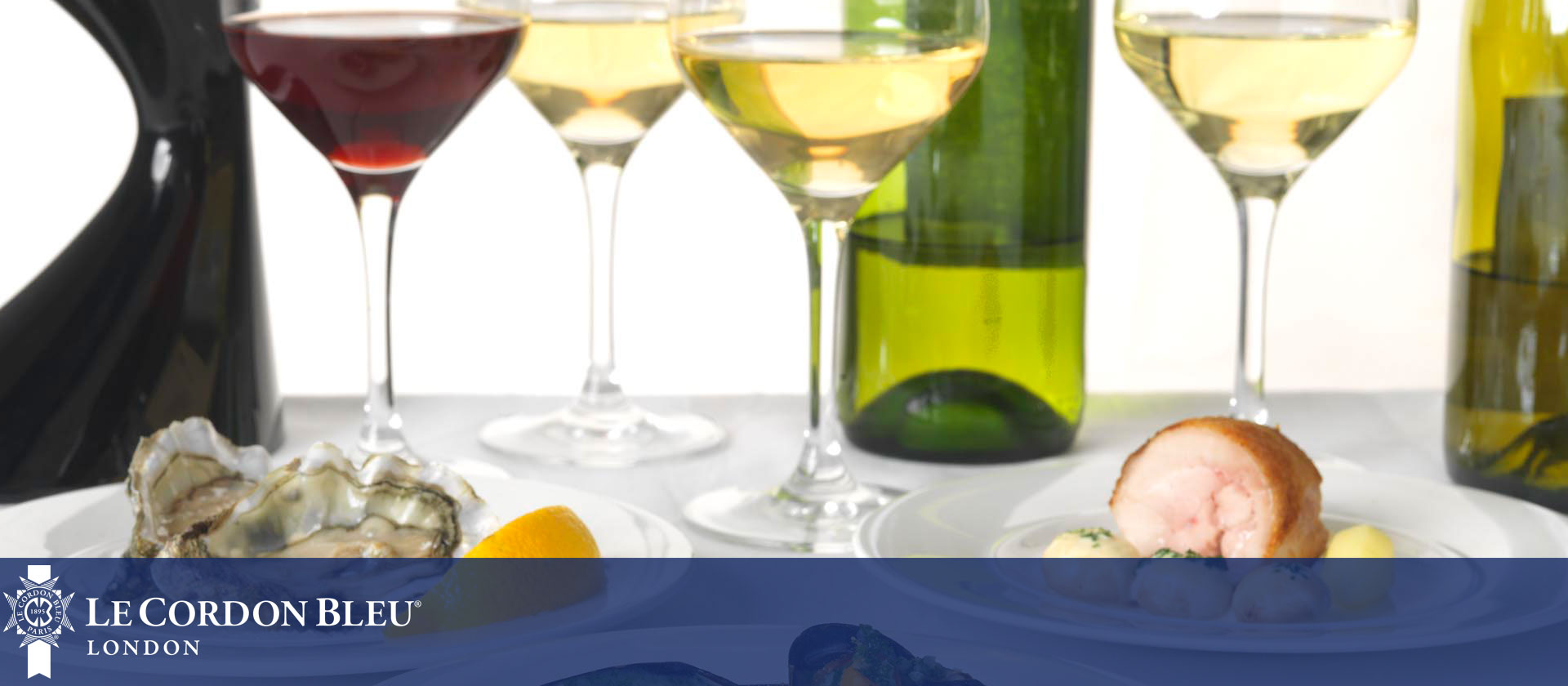-
Locations
Campuses in Europe & Middle EastCampuses in The AmericasCampuses in AsiaLe Cordon Bleu International
- Online Learning
Contact your local representative - Our Story
- Programmes
- Brochures
- News & Events
- Contact
- Find Course

One of the key principles behind the best pairing is to understand both the food you are serving and the wine, by analysing their basic components in order to enhance your dining experience.
The idea is to try to find the right balance where neither the food nor the wine overpowers the other.
1. Taste in wine is subjective
Before even reading about the best food and wine pairings, you should consider YOUR personal taste. If a combination pleases you then it is a good choice for you.
2. Always keep the intensity of flavours in balance
Match mild foods with mild wines or pair rich foods with rich wine.
Try at home: the sweet and sour flavour of citrus is complemented by an off-dry Riesling of a similar nature or a dish with a creamy sauce will be enhanced by the similar flavour found in rich, buttery Chardonnay.
3. Acids go with acids
If you're eating a dish with a strong acidic content (such as baked goat cheese and baby leaf salad), pair it with an acidic wine that can keep up with the acids in the food - such as a New Zealand Sauvignon Blanc.
4. Pair with the most dominant flavours of the dish
It is common to think that we need to pair the wine with the meat or with the fish. However, in some cases the sauce or cooking method have more influence on the actual taste of the dish . For instance, when you serve duck with a fruit-based sauce such as cherry or orange, choose a gutsy, low-tannin wine such as a red from Rhône.
5. Wine and spices
Pairing wine with Indian or Chinese food can be very challenging as the strong spices can clash and destroy the flavours of the wine. Off-dry Riesling is probably the only wine that tastes good with highly- spiced curry. More generally, wines made in a Germanic style will be a great match with Asian food.
6. Contrast the flavours of dessert and dessert wine
You can opt to create your own balance by putting two contrasting flavours with each other.
For example: the treacle-like sweetness of a Pedro Ximenez contrasted by the freshness of vanilla ice-cream or the richness of a Tarte Tatin cut through by a crisp, sharp late harvest Chenin Blanc.
7. There are no mistakes in food and wine pairing
If the wine doesn’t work with the dish that you decided to pair it with then it shouldn't be considered a mistake. It will only help you in making your decision next time you prepare the same dish.
We recommend trying new more adventurous pairings you may discover a pairing that you like even if it is unconventional. That’s what makes food and wine pairing exciting!
8. If you are not sure…
It is often a safe bet to pair wine with foods that are from the same region. If you are eating a nice slice of Comté cheese, what better match than a wine from the Jura region?
Matthieu Longuere is Wine Development Manager and oversees one of Le Cordon Bleu London’s programmes: Diploma in Wine, Gastronomy and Management. The 6-month Diploma has been developed to provide students with an in-depth knowledge of wine, incorporating sensory analysis; production; food and wine pairing and business management.
Copyright © 2026 Le Cordon Bleu International B.V. All Rights Reserved.